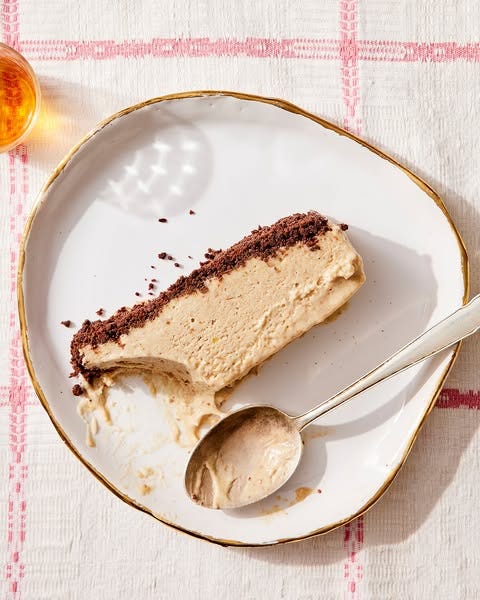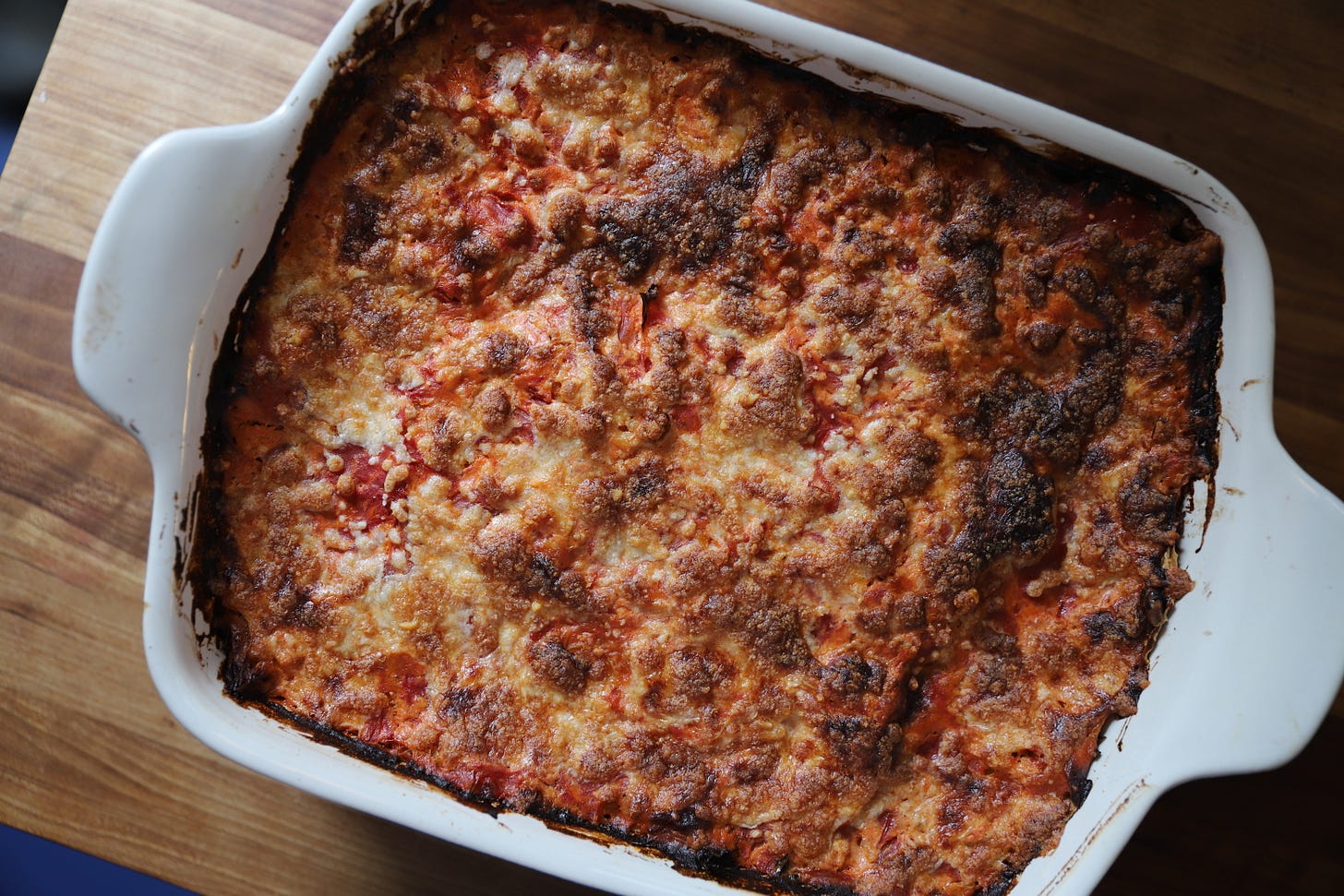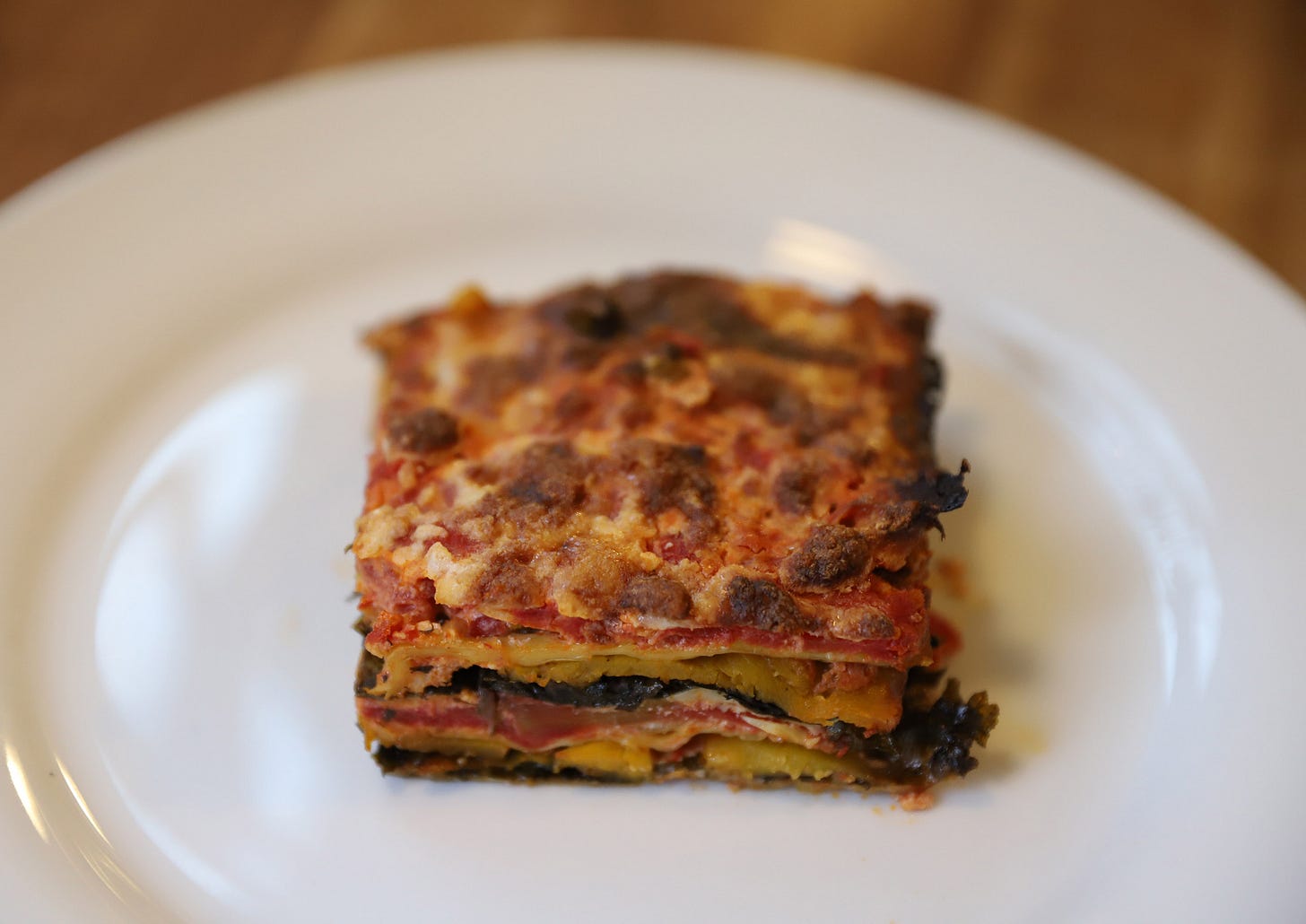Howdy,
This is the first of a two-part series focusing on yuba (a.k.a. tofu skin or bean curd skin), the thin sheets of silky, alluringly chewy, protein-rich skin that form when soy milk is heated. These sheets are sold in several forms and make their way into many traditional and contemporary dishes in Japan, China, and other Asian nations. But, to be honest, I was drawn to yuba for the potential I saw in it to serve a completely untraditional purpose: as a substitute for pasta in a lasagne. In the second part of the series, I’ll tell you more about how yuba is made and what I’ve learned about the traditional and contemporary Asian and Asian-American uses for it, but today I’ll tell you about how that lasagne went (spoiler: it went very well). (I realize publishing the series in this order seems a bit backwards, but I’m still culling from my interviews with experts on the subject, while the recipe that follows is ready to go.)
I wrote a few new morsels for The New York Times that I’m excited to share:
an introductory guide to gluten-free baking (for which I interviewed
Aran Goyoaga (“Cannelle et Vanille”), Alice Medrich, and Kat Cermelj (“The Loopy Whisk”);
a recipe for Gluten-Free Yellow Sheet Cake with vanilla ermine frosting (this cake is so good—whether you give a hoot about gluten or not);
and my absolute favorite All-Purpose Gluten-Free Flour Blend.
In decidedly not gluten-free news: last Friday, I made the smart decision to immediately follow
’s recipe for smörfrallor (cheesy seeded butter rolls). Now I have a freezer-full of them—topped with poppy seeds, because I still had a ton from my poppyseed croissant tests.For the past three or four years, I’ve used Wisdom Supply’s recyclable weekly planner. To keep in line with their “zero-waste” ethos, they require you reserve a planner before production begins. It’s shocking how swiftly the call to reserve comes each year (that’s a comment on the passage of time, not on Wisdom Supply’s timing). They’ve just sent out their email for 2026 planners, and since I’ve appreciated their layout, dimensions, and material structure more consistently than those of any other previously, I’m passing the word along. You can see more details and reserve here.
And, finally: Want some Passover-friendly dessert ideas? Here are a bunch from Good & Sweet:
Talk to you soon.
Brian
*Formal Assignment P.S. is for paid subscribers. It’s just $6 a month—or even less for an annual subscription or a pay-what-you-can subscription.
---
Behind the Scenes:
DEVELOPING A YUBA LASAGNE RECIPE
---
’s Small Victories was published in 2016, so I’ve been making some variation of her lasagna recipe for the better part of a decade. It’s probably my most guaranteed crowd-pleaser at this point. Recently, based on a request by friends (shoutout to AF and MM), I started experimenting with substituting the freshly-made pasta with a grain-free, less starchy component. I first tried very thinly sliced extra-firm tofu. It worked satisfactorily and tasted good (good enough for AF to ask for the recipe—sorry it’s taken so long!), but I had an inkling that yuba, a.k.a. tofu skin—an ingredient I’d heard of but had never cooked with—would be better. I thought it would be very difficult to find, but it turned out that California-made Hodo, the single brand of yuba widely distributed in the US, was available at my local natural food store (It’s also available at Whole Foods). I immediately made a lasagne with yuba, and it turned out better than the tofu version, but the soft, creamy yuba kind of got lost, texturally speaking, among the sauce, cheese, and vegetables. I suspected that partially drying the yuba out and simultaneously waterproofing it with some cheese would bolster its presence among the layers. Indeed, this technique resulted in layers of yuba that had a bite similar to that of al dente pasta. And so, it’s made its way into the recipe below.
---
Recipe:
A NICE (YUBA) LASAGNA, a.k.a. YUBA-SAGNE
---
Adapted, with permission, from “A Nice Lasagna” in
’s Small Victories (Chronicle Books, 2016).The original recipe involves making fresh pasta; this adaptation instead uses yuba, the Hodo brand of which is available at many U.S. natural food markets, including Whole Foods. I’ve explained in the “Behind the Scenes” section above how the yuba layers work in this lasagne (Yes, you may swap in fresh or dried pasta if you prefer), and here’s Turshen’s explanation of the other “small victories” of her original recipe:
One is “skipping both the American tradition of using ricotta (which can get watery and even tough when baked) and the Italian tradition of adding béchamel (who wants to dirty another pot and worry about lumps?) and go straight for crème fraîche. It gives you the requisite creaminess that all great lasagnas need to have, but without any effort…”
Another “small victory is a high sauce-to-pasta”—or, in this case, sauce-to-yuba—”ratio…This way, the pasta”—or yuba—” absorbs the sauce and gets full of flavor…”
NOTE: My interventions and modifications to the original recipe are italicized below, while Turshen’s words from the original recipe are in roman type (Did you know that un-italicized type is called “roman”?!).
Makes 6 to 8 servings
Active time: 2 hours 10 minutes (includes all cooking)
Total time: 2 hours 25 minutes (includes resting time)
---
INGREDIENTS:
---
For the yuba lasagne noodles:
Keep reading with a 7-day free trial
Subscribe to Formal Assignment to keep reading this post and get 7 days of free access to the full post archives.







